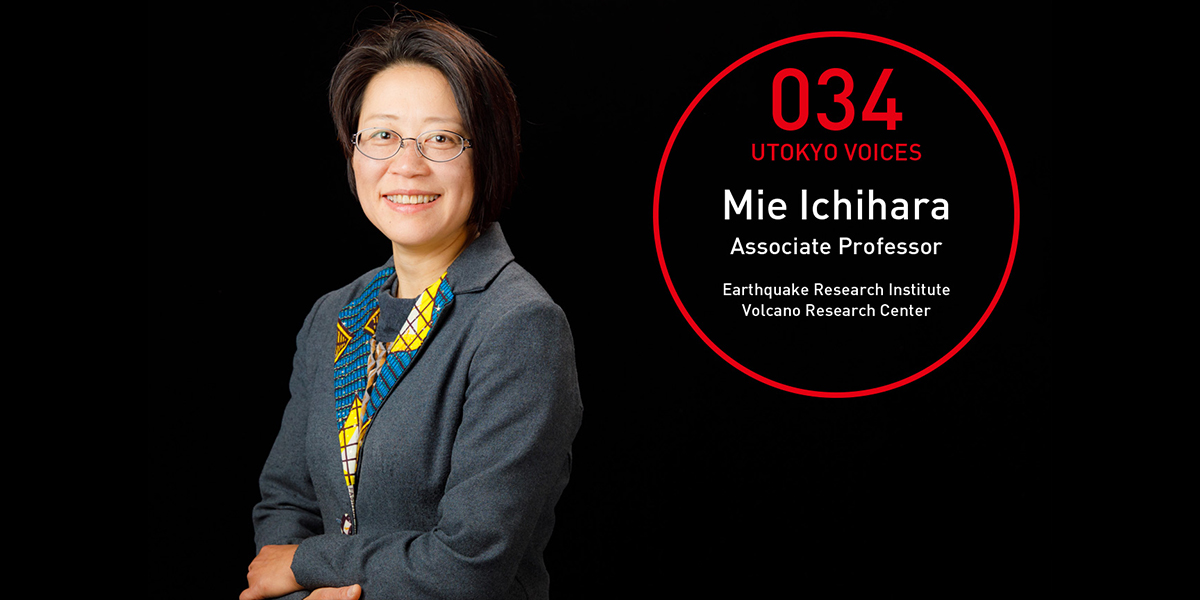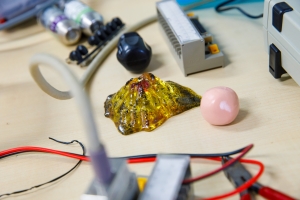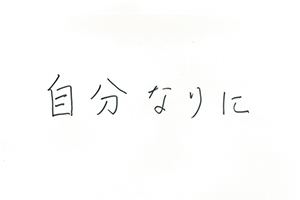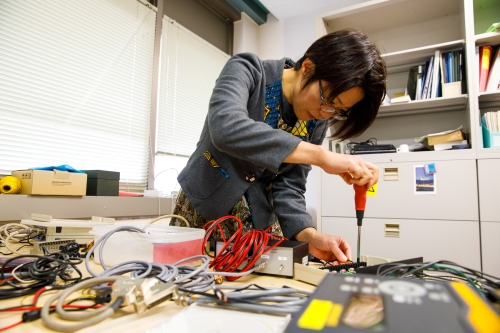Set no Boundaries | UTOKYO VOICES 034


Set no Boundaries
It is no overstatement to say that the words of a local shoe store owner set Associate Professor Ichihara on the path to volcanology.
Ichihara, who grew up in a small town in Tokushima Prefecture, received her first pair of pumps from her parents in her final year of high school to celebrate her acceptance by the University of Tokyo. The local shoe store owner, who happened to have studied astrophysics at Kyoto University, asked her what she would be studying there. When she told of her interest in astronomy and space, and of her wish to travel the world, the advice the store owner gave her was etched into her subconscious: “If you want to travel here and there, then geophysics would be a good choice.”
After some hesitation as to whether to major in geology or geophysics, she chose the path of geophysics. She had completely forgotten about the shoe store owner, but she gives great credence to the conversation that day: “When I think about it now, if I hadn’t met that shoe store owner, I might not have chosen geophysics.”
“I chose volcanoes because I was drawn to the complex behavior of magma. And I wanted to do experiments, but being able to actually go to a volcano and see it with my own eyes was part of the appeal.” Yet, still lacking in experimental skill, she was uncertain: “I kept my position at the Earthquake Research Institute while researching multiphase flow in the lab of the Mechanical Engineering Department. I learned experimental techniques there, among other kinds of basic knowledge.”
A volcanic eruption can basically be understood as a thermofluid phenomenon. However, magma possesses transitionary characteristics between a fluid and a solid, posing the problem of not only the flow of a solid but the fracture of a fluid. She pursues research based both on theory and experiment to understand these phenomena.
“I began studying the behavior of magma using rubber clay samples during my studies in the US. As I gained a deeper understanding through this experimentation, I realized that a fracture model for magma, which is liquid glass, could not be verified using a rubber clay sample. During the time I was writing my doctoral dissertation, I found from the collaborative research I had done with the Mechanical Systems Engineering lab of Tokyo University of Agriculture and Technology that starch syrup served as a decent simulation substance for magma. I have worked with that lab to run magma fracture tests using starch syrup for over 10 years, and I believe we have, for the most part, re-created the brittle fracture of magma. My collaborators in this experiment contributed greatly to this.”
Moreover, diverse vibrational phenomena are observed in active volcanoes in the form of earthquakes, crustal movements and air shock (sonic waves), so Ichihara does field observations of the sounds volcanoes make to try to understand their significance.
She places air shock sensors targeting Mount Asama, Kirishima, Sakurajima, and Nishinoshima to conduct further research. She placed an air shock sensor 700 meters away from the crater of Kirishima one month before it erupted in 2011. She recalls, “When the eruption began, it proved to be a valuable case study that provided extensive data not only on crustal shifts and earthquakes, but also air shock data, of which we were able to capture everything from beginning to end. This allowed me to compare phenomena observed in the lab with an actual volcanic eruption, and provided a clearer image of the phenomena occurring in the crater and inside the volcano. Measurement of air shock allows us to promptly detect the start of an eruption and its behavior, thus maybe reducing casualties from volcanic eruptions, like those that happened at the crater of Ontakesan.”
On why she finds volcanology interesting, Ichihara says, “Signals from natural phenomena can be seen in the data from the field, and there is a joy to being able to directly investigate those phenomena in the lab. It gives me a thrill when phenomena happen that I would never have expected from my lab work. And in looking into what caused them, I set no boundaries. It is important to use anything necessary to try to get to the bottom of a problem.”
It is Ichihara’s belief that not creating barriers is what leads to breakthroughs.


Ichihara carried out magma fracture experiments during her studies in the US using a viscoelastic rubber material, but the elasticity of rubber and magma are fundamentally different. She found that starch syrup behaved similarly to magma, and spent over 10 years collaborating with the Mechanical Systems Engineering Department of Tokyo University of Agriculture and Technology, which resulted in their almost completely reproducing the brittle fracturing of magma in experiments.


[Text: Jibun nari ni (“In your own way”)]
“Find out by yourself what you want to do, then follow the path you’ve chosen for yourself. And then it’s important to set no boundaries in your research.”

Mie Ichihara
Graduated with a PhD from the University of Tokyo in 1998. Became a Fellow of the Japan Society for the Promotion of Science Research (attached to the Kameda Group Fluid Mechanical Laboratory, Mechanical Systems Engineering, Tokyo University of Agriculture and Technology) in 1998. Worked as overseas special researcher at the California Institute of Technology in 1999. Upon returning to Japan in 2001, worked at the Interdisciplinary Shock Wave Research Laboratory and the Center for Northeast Asian Studies at Tohoku University. Entered the Earthquake Research Institute at the University of Tokyo in 2004. Served as assistant professor before becoming associate professor in 2013 (current position). Researches eruption mechanisms of volcanoes and accompanying wave motion phenomena.
Interview date: December 8, 2017
Interview/text: Tsutomu Sahara. Photos: Takuma Imamura.






